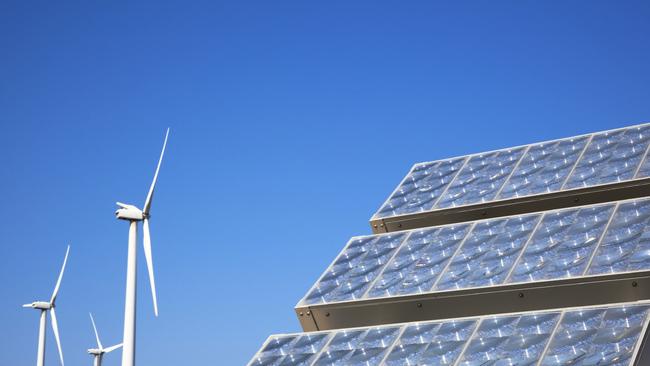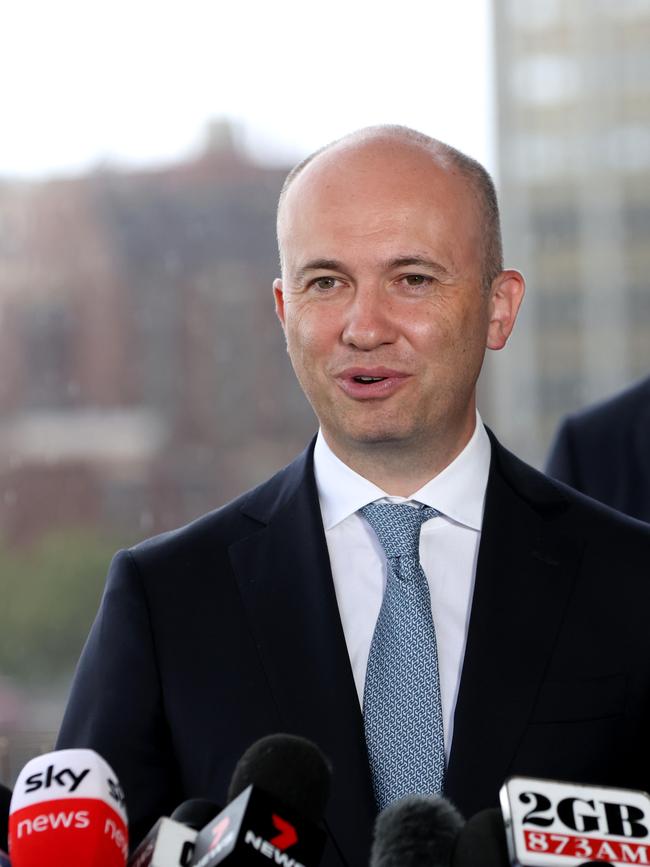NSW lures $100bn renewable energy bonanza as transition accelerates
NSW has attracted commercial interest in renewable generation and storage projects worth more than $100 billion.

NSW has attracted $100bn worth of potential investment in a renewables zone located in the heart of coal country, the latest sign that financiers are flocking to clean energy projects as a transition away from the fossil fuel accelerates.
The state received commercial interest in renewable generation and storage projects for the Hunter Valley and Central Coast regions surpassing 40 gigawatts, representing over two-thirds the current capacity of the entire national electricity market.
Developers and investors are looking to build 24 solar farms, 13 onshore and seven offshore wind energy projects, 35 large-scale batteries and eight pumped hydro facilities.
The initial interest in the renewable zone, one of five dotted through the state as part of NSW’s 20-year energy blueprint, shows the level of potential funding available over the next decade as existing coal-fired power stations are taken offline.
Treasurer and Energy Minister Matt Kean said the projects have the potential to deliver more than 100,000 gigawatt hours of renewable energy a year, equivalent to the annual output of up to 10 coal fired power stations.
“Renewable Energy Zones are vital to ensuring the future reliability and affordability of electricity in NSW as traditional coal fired power stations close down over the coming decades,” Mr Kean said.

The state has previously recorded 34GW of commercial interest in its New England renewable zone, four times the amount needed, giving Mr Kean confidence NSW households will eventually enjoy some of the world’s cheapest power prices.
Four of the five existing coal-fired power stations in NSW are due to expire within 15 years, beginning with the Liddell Power Station in Muswellbrook, in northern NSW, by April 2023. They provide 75 per cent of the state’s supply.
One of the coal plants slated to close in 2035 could now be shut at least seven years earlier with owner AGL Energy reassessing the life of Bayswater in the Hunter Valley as it reassesses both its exposure to the most polluting fossil fuel and the ability of big generators to compete with cheap renewables through the day.
Still, the rapid transition away from coal to renewable sources and the scale of investment required to pull off the pivot continues to raise concerns among some potential investors in the market.
The Australian Energy Market Operator, which runs the national electricity network, has plotted a draft “step-change” scenario with the plan requiring a nine-fold increase in wind and solar capacity by 2050 to meet the nation’s net zero emissions targets while some 45 gigawatts of storage across batteries and hydro will be required with 9GW of gas-fired power needed to help firm up renewables.
Origin Energy pointed to a disconnect between modelling outcomes and what is “reasonably practical”, referencing NSW’s New England renewable energy zone.
“Under the step change scenario, in the New England REZ. 3.4GW of wind is forecast to be commissioned within a single year 2027-28. However, this outcome seems unlikely given the lead time involved in commissioning and connecting projects,” Origin said in a submission to AEMO’s draft integrated system plan.
“In addition, the draft predicts New England will host 6GW of renewable capacity by 2028-29 with a total network capacity of 3.1GW. It is not clear if this level of overbuild of renewables is realistic. This also seems inconsistent with the draft ISP’s own forecasts of expected transmission curtailment levels in the New England REZ, which would imply a lower level of overbuild.”
While only a slice of the $100bn of potential investment is likely to proceed, the spread of projects across key renewable sources signals NSW may be rewarded for setting out an early blueprint well ahead of coal closures.
The market more broadly has struggled to attract long-term investment in renewable energy infrastructure, especially on the transmission side of the network, due to ongoing policy uncertainties.
The release of the NSW road map in 2020 aims to ease this uncertainty by boosting investment through several mechanisms, beginning with increasing generation through REZ sites in regional NSW.
Powered by solar farms and wind turbines, these zones will be supported by pumped hydro projects and battery power to ensure power is available when supply falls short.
The Energy Corporation of NSW said it was in the early stages of planning the Hunter-Central Coast REZ and will be using early interest to inform the timing, capacity and boundaries of the clean energy zone. It is expected to be formally declared under the NSW Government’s Electricity Roadmap legislation by mid-2022.


To join the conversation, please log in. Don't have an account? Register
Join the conversation, you are commenting as Logout